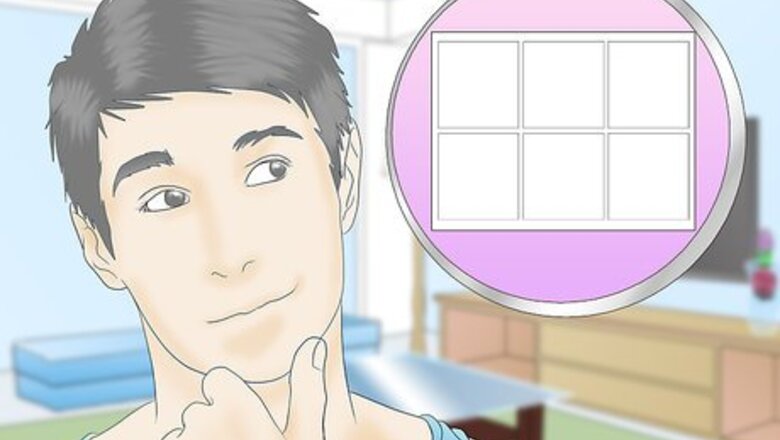
views
Laying Out the Grids on Your Page
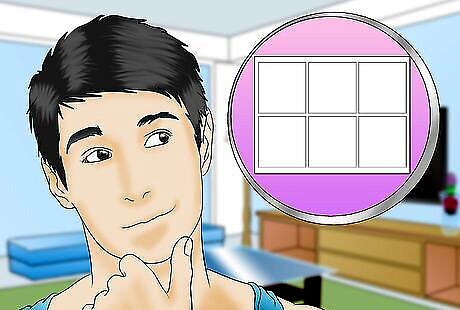
Think about page layout. The size and shape of your panels will help to depict the flow of your comic. For action, you need a panel that is large enough to fit the movement. You also want to create a flow that makes it easy for the reader to move from one panel to the next. Only include a few panels horizontally. You should never use more than four in a row. Stagger your grid gutters. The gutter is the blank space between each panel. Staggering the gutters helps to differentiate each panel.
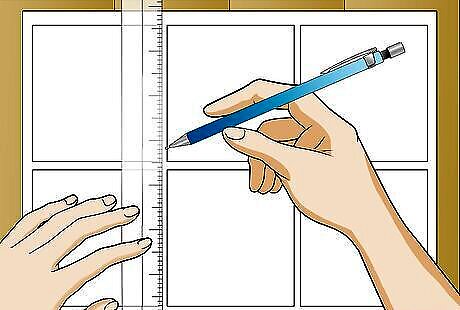
Use a grid to moderate pace. The most common grid layouts include pages of six or nine grid panels. A nine grid panel is effective when you need to convey a lot of information. A skewed grid can also be used to create a sense of motion and dynamic action. You can also use a widescreen panel to create a moving, cinematic feel. A six or nine panel grid is good for showing continuous action like someone walking or to simulate the pan of a camera. Skewed grids can be used together to show a lot of action happening at once on a page. Instead of drawing squares or rectangles, draw parallelograms to create motion.

Create a point of focus. Before you draw the characters and action in your panels, determine where the main focal point in each panel is. A focal point directs the reader's eyes to a specific spot in the panel and helps avoid confusion as the eyes move from panel to panel. Like a movie, think about the rule of thirds, cutting each panel into three equal parts, and placing your focal point in one. Plan your focal points out so that the reader's eyes follow each one down the page in more or less a zigzag formation. For horizontal panels, place your focal point in the left, right, or center portion. For vertical panels, place your focal point in the top, bottom, or middle third. With a square panel, you can put your focal point anywhere, so the key here is to place it somewhere that guide your reader's eyes to the next panel.
Creating Action in Your Characters
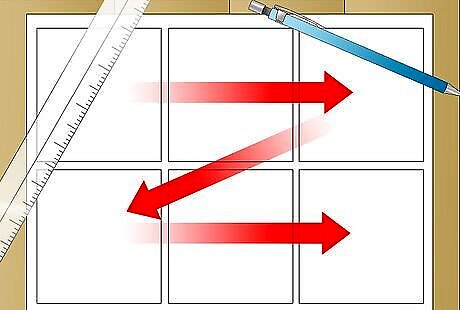
Create a line of action. A line of action doesn't mean dialogue, it's the imaginary line that traces your character's movement. The line of action should be a dramatic, intense path that dictates how your character's body is moving in a panel. To practice, you can draw a line of action with an arrow pointing the direction you want your character moving. Draw this line in pencil and the use it as guideline when drawing the rest of your character. The line of action should be fluid so that we can see the intentions of your character's movements. Don't be afraid to exaggerate. If your character is pointing, the line of action starts at the feet and moves up through the body, extending through the arm.
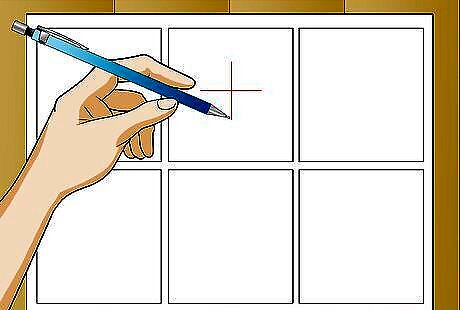
Begin drawing with a center line. The center line should always be the first thing you sketch out when drawing a figure. This line can even double as your line of action. Once you have an exaggerated center line that depicts movement, begin to draw your character around it. Each pose has a rhythm to it, and your center line is what depicts that rhythm. Say your character is running, a center line that is more or less vertical isn't as action filled as a center line that curves. Think about how the body should be leaning forward to depict more motion.
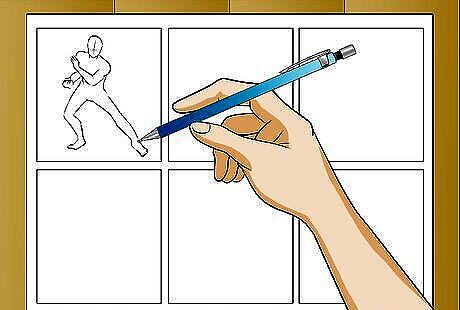
Be dramatic. When you draw your characters, make each pose dramatic, even if your characters are simply standing. By thrusting the head farther forward or spreading the legs wider, you can create a better sense of motion and action. Incorporate expressions to indicate an action or event is about to happen. Even if you're drawing a character's face in a panel before the one where the action will happen, draw that character so that there is an acknowledgement of the pending action. For example, if your character is watching the beginning of an explosion, draw the eyes wider, the mouth open. Use your center line, or line of action to depict the character reeling back as if preparing for the explosion.
Drawing the Surrounding Action
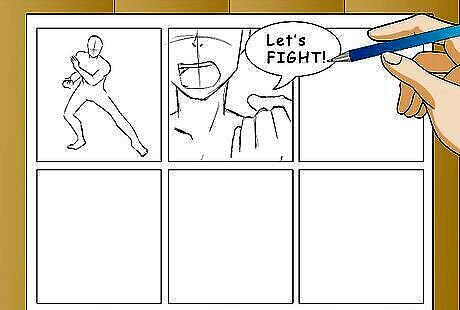
Employ proper lettering techniques. Lettering is often an afterthought when novice artists are drawing comics. Lettering can give the action that last needed impact, or deflate the whole situation if done incorrectly. Speech bubbles and sound effects are artwork and should be given due attention. Think about where your focal points are in each panel and place bubbles accordingly. Lettering advances the story and should follow the same zigzag method to facilitate an easy to follow flow for the reader.
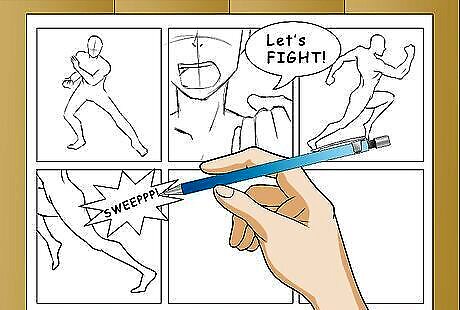
Use tone to create action. Instead of drawing a word bubble with lettering and an exclamation point, use colorful block lettering in a burst balloon. A burst balloon has jagged edges and creates a sense of urgency. Think about the onomatopoeia of your sound effects. If you're writing “BLAM” to show a gunshot, consider what those letters should look like. Are the big, bold and colored in to create a loud, ringing sound? Or are they hollow block letters that sound more like a quick cracking noise. Place your sound effects somewhere that draw the eye to the next panel.
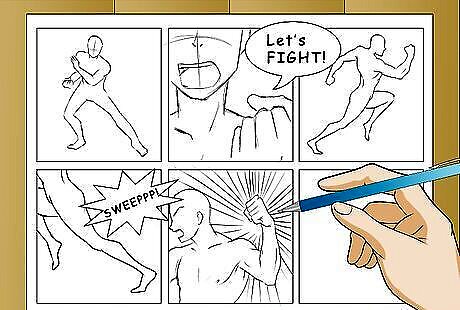
Draw action, or speed lines. Use a point of focus in your background that show depth. Action, or speed lines are a very effective way to create motion and action in a scene. Instead of drawing a detailed background, sometimes action lines drawing to a single point in the background can create the proper feeling of movement. If a character is running at you, draw lines like the iris of an eye around the character to make it look like that character is moving forward. If a character is moving left or right, draw speed lines trailing your character. Another way to draw action is to draw spit or debris flying. If someone is getting punched, draw trails of spit flying away.




















Comments
0 comment